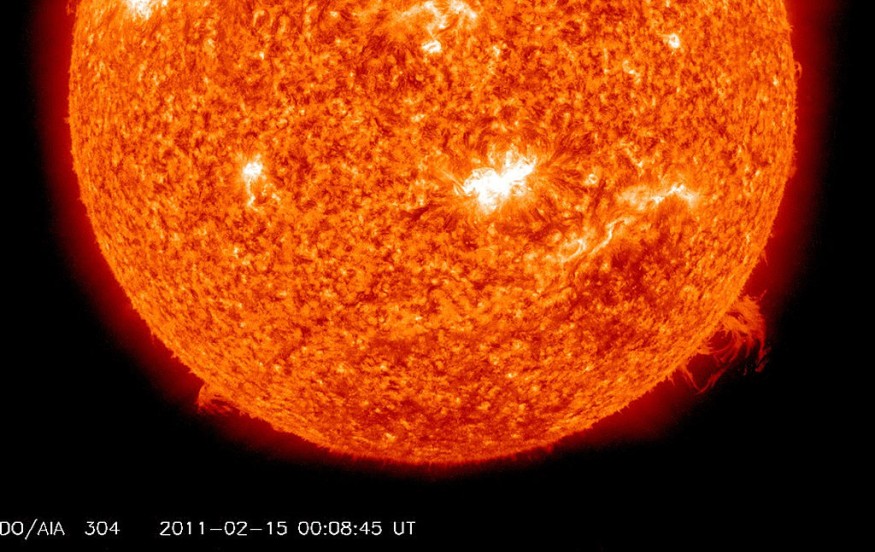Scientists monitored the elusive comet 323P/SOHO during a close encounter with the Sun. Unfortunately, things didn't go well for the comet.
Near-sun comets might be challenging to see and track. Their strange orbits put them on a collision path with the Sun. Astronomers are still puzzled about why they don't observe more of these items.
"This is the first time such a comet has been caught in the act of disintegrating and could help explain the scarcity of such periodic near-Sun comets," researchers said per Science Daily.
Astronomers from Macau, the United States, Germany, Taiwan, and Canada watched the near-Sun comet 323P/SOHO using a group of powerful telescopes. For the first time, they were able to photograph a comet breaking up in its dangerous orbit.
The researchers hope their findings, published in the Astronomical Journal, will help explain why there are so few comets with periodic orbits in such close proximity to the Sun.

Sun Fries Comet 323P/SOHO to Death
Cosmos Magazine said astronomers had observed Comet 323P/SOHO traveling too near to the Sun, causing it to disintegrate due to the Sun's heat.
The Solar and Heliospheric Observatory (SOHO), is a European Space Agency (ESA) spacecraft. ESA partnered with NASA for a mission using SOHO to continually examine the Sun, and it detected the comet 323P/SOHO in 1999.
According to Space.com, 323P/SOHO is an uncommon near-sun comet with elliptical orbits that bring it closer to the Sun than the orbit of Mercury, the solar system's innermost planet.
Many such comets are predicted by theoretical models, but only a few have been spotted thus far. It might be explained by recent observation.
When 323P/SOHO last neared its perihelion, the closest point to the Sun in its 4.2-year orbit, it drew a large crowd in the winter of 2020/2021.
Short period comet 323P/SOHO has - as predicted - turned up again in the @ESA/@NASA SOHO/LASCO C2 images. pic.twitter.com/3P8KCBBufH
— Karl Battams (@SungrazerComets) November 23, 2016
The Hubble Space Telescope, the Gemini North, Canada-France, and Subaru Telescopes in Hawaii, and the Lowell Discovery Telescope in Arizona were among the world's most powerful telescopes watching the comet approach past Earth's star.
Although the telescopes did not witness the closest approach, the changes they noticed over a few months hinted that something unique was happening with 323P/SOHO.
When the Subaru Telescope looked for the comet as it reached perihelion in December 2020, it only found a little dot.
The comet, however, appeared considerably different when it reemerged into view of Hubble, Lowell, Canada-France, and Gemini-North observatories in February and March 2021.
Experts said 323P/SOHO looked odd and had a long tail of expelled material.
As the comet neared the Sun, Syfy said photographs collected by the NASA-ESA solar spacecraft SOHO revealed that the comet was indeed 323P/SOHO.
Why The Comet Disintegrated
The observable alteration, according to scientists, occurred as the comet fragmented due to the high heat near the Sun.
"The intense radiation from the Sun caused parts of the comet to break off due to thermal fracturing, similar to how ice cubes crack when you pour a hot drink over them," the researchers said in a statement.
The hue of the comet also shifted, becoming "unlike anything else in the solar system." 323P/SOHO was also observed to be rotating quickly, completing one rotation in less than half an hour.
In the same Space.com report, Man-To Hui, who was a University of Hawai'i researcher at the time of the observations and is now an assistant professor at Macau University of Science and Technology, said that more observations of other near-sun objects are needed to see if they share these characteristics as well.
Observing comets that pass close to the Sun, on the other hand, is a difficult task. The majority of them are discovered by chance by sun-observing spacecraft like SOHO.
RELATED ARTICLE : Largest Comet Outburst Leaves Dust Trail That Looks Like an Hourglass
Check out more news and information on Space in Science Times.
© 2025 ScienceTimes.com All rights reserved. Do not reproduce without permission. The window to the world of Science Times.










